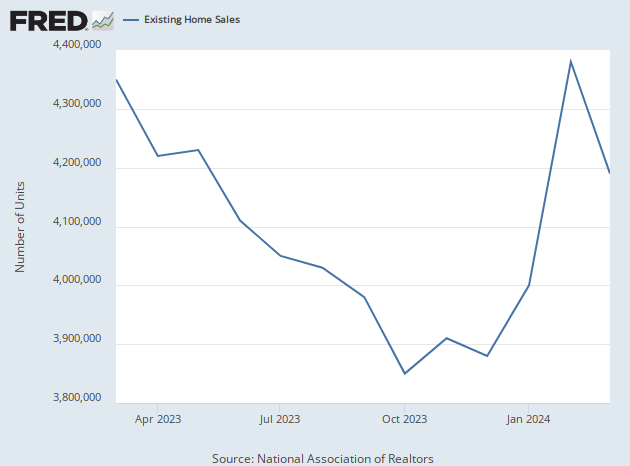Inflation is weighing on homes sales as the Fed scrambles to control price levels by pushing up interest rates.
Existing-home sales dropped 7.2 percent between January and February, falling to a seasonally-adjusted, annual rate of 6.02 million, according to data released by the National Association of Realtors on Friday. Sales are down more than 2 percent compared with a year ago.
Analysts surveyed by Econoday had projected existing-home sales to come in at 6.17 million.

“Housing affordability continues to be a major challenge, as buyers are getting a double whammy: rising mortgage rates and sustained price increases,” said Lawrence Yun, chief economist for the National Association of Realtors. “Some who had previously qualified at a 3% mortgage rate are no longer able to buy at the 4% rate.”
The median sales price for an existing home in February was $357,300, 15 percent above the year ago median price. But due to rising mortgage rates, monthly payments are now 28 percent higher than they were a year ago, Yun said.
The Federal Reserve on Wednesday raised its target rate for overnight lending between banks one-quarter of a percentage point to a range of 0.25 percent to 0.50 percent. It signaled that it would raise its target another one-and-half percentage points by year’s end. Mortgage rates, however, have been rising alongside longterm Treasury yields since the end of last year.
The Fed had planned on keeping rates lower this year but was caught off-guard by inflation surging to a forty-year high. It has now pivoted to tightening monetary policy in an effort to stem the rise of price levels.

Home prices are not directly included in the U.S. government’s primary measure of inflation, the Consumer Price Index, because much of the price of a home is regarded as a capital investment rather than consumption. Instead, the government estimates how much of the service of being shelter a homeowner is consuming in a category called the owner’s equivalent of rent, an attempt to figure out how much a homeowner would be paying if they rented their home instead of owning it.
Inventory rose slightly from the record low recorded in January but at 1.7 months remains extremely low. A supply of six months is considered normal.
The housing market has been hit by increased demand for homes and supply constraints. At the start of the pandemic, many people decided to move out of city centers and into suburbs and even rural areas. Riots, anti-police protests, far left political dominance, looting, and a surge in violent crime in many cities also encouraged exit migration from urban areas, giving rise to what Breitbart News has called a “flight from the cities.”

COMMENTS
Please let us know if you're having issues with commenting.